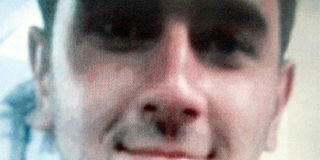Lebanon puts out images of 'Iran embassy blast suspects'

A handout picture released by the Lebanese army on November 22, 2013, allegedly shows Mouin Abu Dahr, one of the suspects responsible for the twin attack on the Iranian embassy in Beirut earlier this week which left twenty-five people dead and nearly 150 people wounded. AFP/PHOTO/LEBANESE ARMY
What you need to know:
One of those whose picture was published was from the southern Lebanese city of Sidon, most of whose residents are Sunni Muslim.
According to a statement published late on the Lebanese army's website, the father of one suspect identified in the press as Mouin Abu Dahr was having his DNA tested.
- On Friday, the military also posted a black-and-white drawing of another young man in white Islamic clothing. It did not name him or specify what crimes he was wanted for.
BEIRUT,
Lebanon's army has published pictures of men wanted for "dangerous crimes" amid media speculation they may be wanted over a twin suicide attack near Iran's embassy that killed 25 people.
Speaking to AFP Friday, several official sources refused to comment on whether the two men shown in the images were wanted in connection with Tuesday's deadly blasts, which also wounded nearly 150 people.
One of those whose picture was published was from the southern Lebanese city of Sidon, most of whose residents are Sunni Muslim.
According to a statement published late on the Lebanese army's website, the father of one suspect identified in the press as Mouin Abu Dahr was having his DNA tested.
"After the photograph of one of the dangerous wanted men was distributed yesterday (Thursday), Adnan Abu Dahr came to the intelligence directorate and claimed the picture showed his son," the army statement said.
"A sample of his DNA was taken for testing," it added, noting that the suspect's father would be questioned.
The army did not specify what crimes Abu Dahr was wanted for.
An AFP journalist in Sidon said "the security forces have deployed around Mouin's home.
"Several journalists also arrived there, and one was beaten by supporters of (radical Sunni cleric) Ahmad al-Assir."
Radically opposed to Lebanon's Shiite Hezbollah and Syria's President Bashar al-Assad, Assir has been on the run since deadly clashes between his supporters and the army in Sidon early this summer killed 17 soldiers.
On Friday, the military also posted a black-and-white drawing of another young man in white Islamic clothing. It did not name him or specify what crimes he was wanted for.
Lebanese media ran reports linking the two men to Tuesday's blasts targeting the Iranian embassy in Beirut's southern suburbs, a Hezbollah heartland.
Shortly after the blasts, an Al-Qaeda-affiliated group, the Abdullah Azzam Brigades, claimed responsibility for the attacks.
Analysts say the twin bombings point to a confrontation between Assad and Hezbollah's main backer Tehran on one hand, and Al-Qaeda on the other.
Lebanon is paying a heavy price in bombings and clashes linked to the war in neighbouring Syria, and also hosts more than 800,000 Syrian refugees.





